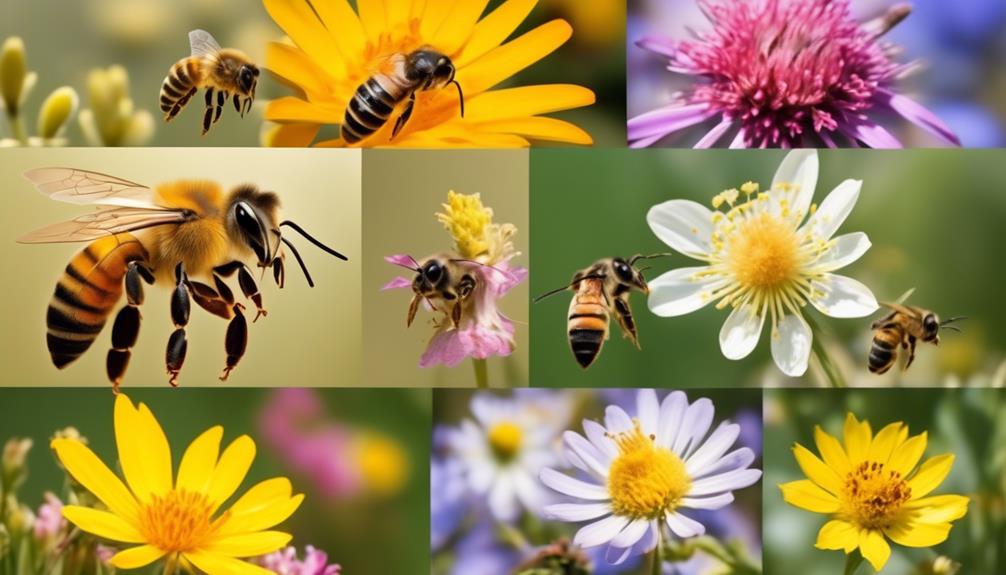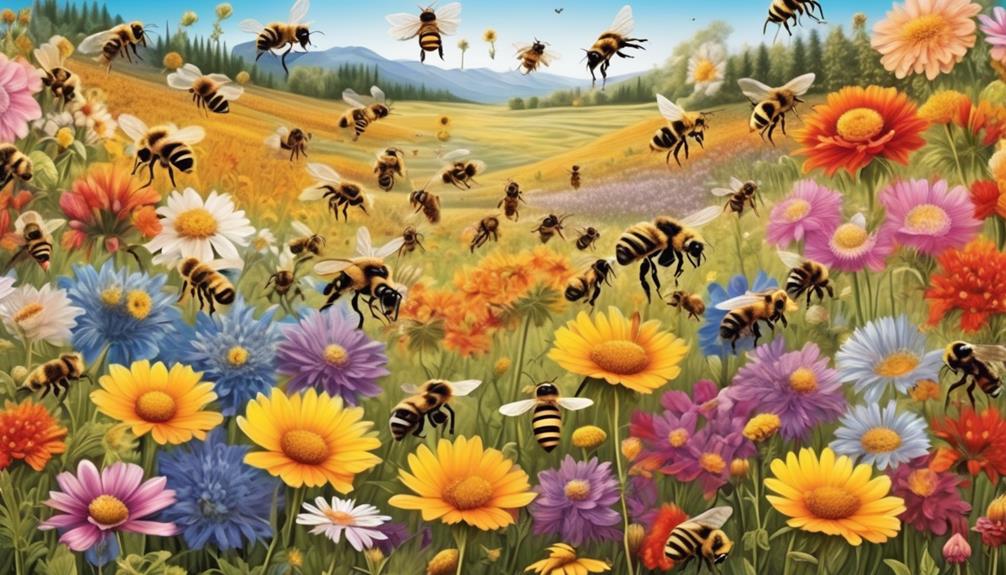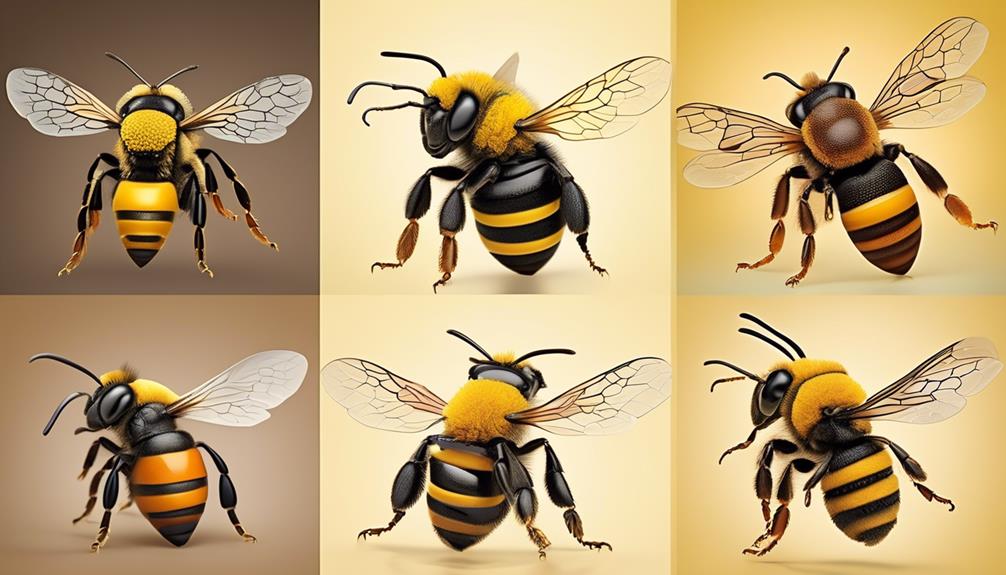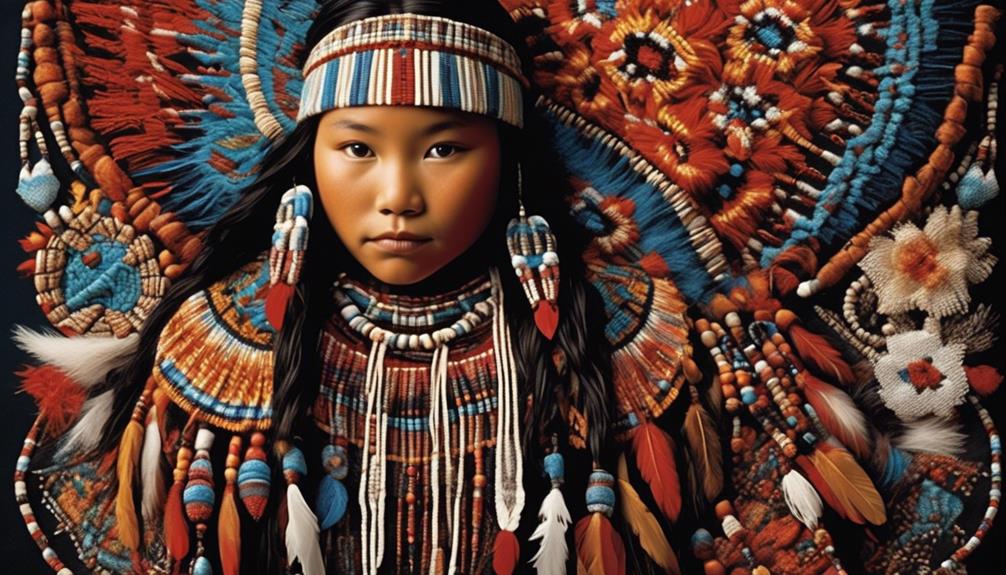You may be wondering why there is a discussion comparing the roles of native bees and honey bees in pollination.
While honey bees are commonly known for their role in pollinating crops, native bees play an equally crucial part in supporting the ecosystem.
Understanding the differences and benefits of each can provide valuable insights into conservation efforts and the overall health of our environment.
So, what exactly sets these two types of bees apart and why is it important to consider their impact?
Key Takeaways
- Pollination by both native and honey bees is crucial for the reproduction of flowering plants and the production of fruits and seeds.
- Native bees contribute to the equilibrium of ecosystems and promote biodiversity through their role in pollination.
- Native bees utilize natural cavities or construct shallow burrows for nesting, while honey bees build elaborate hives.
- Conservation efforts for both native and honey bees involve preserving and restoring natural habitats, minimizing pesticide use, and raising awareness about their importance.
Importance of Pollination
Pollination is a crucial process that regularly occurs in nature, where various organisms play a vital role in the transfer of pollen between plants. This process is essential for the reproduction of flowering plants and the production of fruits and seeds. The benefits of pollination are far-reaching, as it directly impacts agricultural productivity, genetic diversity, and ecosystem stability.
However, pollination also presents challenges, such as the decline in pollinator populations, which can have detrimental effects on food production and biodiversity. Understanding the importance of pollination is crucial for implementing conservation efforts and sustainable agricultural practices that support pollinator populations.
Native bees and honey bees both play a crucial role in pollination, but they have different behaviors and preferences. Native bees are often more efficient at pollinating certain crops, while honey bees have a larger foraging range and can be managed for specific agricultural needs. Understanding these differences is vital for maximizing the benefits of pollination in agricultural systems and natural ecosystems.
Role in Ecosystem

Bees, both native and honey bees, play a crucial role in maintaining the balance and functioning of natural ecosystems through their pollination activities, ensuring the reproduction and diversity of flowering plants. Their impact on ecosystem balance and biodiversity is significant. Here's how they contribute:
- Ecosystem Balance: Bees contribute to the equilibrium of ecosystems by promoting the growth and reproduction of various plant species through pollination. This, in turn, supports the food web and provides habitats for other organisms, ultimately contributing to the overall stability of the ecosystem.
- Biodiversity Impact: Bees, by facilitating the reproduction of numerous plant species, contribute to the overall biodiversity of ecosystems. Their role in pollination ensures that a wide variety of plants can thrive, thus supporting diverse animal species that depend on these plants for food and habitat.
- Competition Dynamics and Resource Utilization: Bees, both native and honey bees, compete for floral resources. Understanding the dynamics of this competition and how different bee species utilize resources is crucial for managing ecosystems and ensuring the sustainability of plant communities.
Nesting and Habitat
Nesting and habitat play a crucial role in the life cycle and sustainability of both native and honey bee populations, influencing their foraging patterns and overall impact on the ecosystem. Native bee nesting habits often involve utilizing existing natural cavities such as hollow plant stems, holes in wood, or underground tunnels. On the other hand, honey bees are known for their elaborate hive structures, which are typically constructed in enclosed spaces like tree hollows or man-made hives. The table below highlights the key differences in native bee nesting and honey bee habitat.
| Aspect | Native Bee Nesting | Honey Bee Habitat |
|---|---|---|
| Nesting behavior | Solitary or communal nesting behavior | Highly social, living in large colonies within a hive |
| Nest location | Utilizes natural cavities or constructs shallow burrows | Builds elaborate hives, often within enclosed spaces |
| Nest structure | Simple, often without complex architecture | Complex hexagonal wax cells within hive frames |
| Nest defense | Less defensive due to solitary nature or small colonies | Highly defensive, with aggressive behavior to protect the hive |
| Nest size | Smaller and scattered | Larger and centralized |
Understanding these distinctions is essential for ensuring the conservation and management of both native and honey bee populations.
Diversity and Adaptations

The diversity and adaptations of both native and honey bees are fascinating to observe in their natural habitats, revealing a myriad of specialized behaviors and physical characteristics.
- Specialized Behaviors
Native bees have evolved to exhibit a diverse range of behaviors to adapt to their specific environments. For instance, some species of native bees are solitary, while others are communal, and their nesting habits vary greatly depending on their ecological niche.
- Physical Characteristics
The physical adaptations of honey bees are remarkable, such as their ability to produce and store honey for times of scarcity, a trait that has allowed them to thrive in diverse environments. Additionally, native bees have evolved specific physical traits, such as different tongue lengths to access nectar from different flowers, enabling them to pollinate a wide array of plant species.
- Environmental Impact
Both native and honey bees play crucial roles in pollination, contributing to the reproduction of countless plant species. Native bees, in particular, have adapted to specific plants, making them essential for the pollination of certain crops and wildflowers, thus illustrating the significant environmental impact of their specialized adaptations.
Conservation Efforts
Amidst growing concerns about declining bee populations, conservation efforts have become increasingly imperative to safeguard the diversity and ecological contributions of native and honey bees.
To address the decline in bee population, conservation strategies are being implemented on various fronts. One such strategy involves preserving and restoring natural habitats that support bee populations. This includes protecting diverse landscapes such as meadows, woodlands, and wetlands, which serve as crucial foraging and nesting sites for bees.
Additionally, conservationists are promoting sustainable agricultural practices that minimize the use of pesticides and provide ample floral resources for bees. These efforts aim to create a more bee-friendly environment and reduce the negative impact of agricultural activities on bee populations.
Moreover, initiatives are underway to raise awareness about the importance of bees and the need for their conservation. Educational programs, community outreach, and public campaigns are being utilized to foster understanding and action toward bee conservation.
Frequently Asked Questions
How Do Native Bees and Honey Bees Differ in Terms of Their Social Structure and Behavior?
Native bees and honey bees differ in several aspects:
- Social hierarchy: Honey bees have a complex social structure with a queen, workers, and drones. In contrast, native bees often have solitary or small-group nesting habits.
- Foraging behavior: Honey bees communicate foraging locations through dance. On the other hand, native bees rely on pheromone trails to communicate.
- Nesting habits: Honey bees live in large colonies and build elaborate wax combs. Native bees, however, tend to nest alone or in small groups.
- Communication methods: Honey bees use dance to communicate foraging locations, while native bees rely on pheromone trails.
Despite these differences, both species have unique adaptations that contribute to their overall success in pollination and survival.
What Are the Specific Plant Species That Native Bees and Honey Bees Are Most Effective at Pollinating?
To understand the most effective pollinating plants for native bees, one must consider their foraging behavior and habitat.
Native bees tend to favor a diverse range of plant species, including many native wildflowers. Their foraging patterns are influenced by factors such as floral abundance and distribution, as well as nesting site availability.
Understanding the specific plant species that native bees are most effective at pollinating requires a comprehensive understanding of their ecological interactions.
Are There Any Specific Threats or Challenges That Are Unique to Native Bees as Opposed to Honey Bees?
Unique threats to native bees include:
- Habitat loss
- Pesticide exposure
- Competition from non-native species
Conservation challenges arise from the need to protect diverse native bee species, each with different behaviors and habitat requirements. Understanding these differences is crucial for effective conservation efforts.
Additionally, native bees may have specific pollination effectiveness for certain plant species, making their preservation vital for ecosystem health.
How Do Native Bees and Honey Bees Differ in Terms of Their Ability to Adapt to Environmental Changes and Disturbances?
Adaptation capabilities in bees are crucial for survival amidst environmental changes and disturbances. Their behavioral differences and social structures affect how they respond to these challenges.
Native bees and honey bees exhibit varying levels of adaptation in the face of environmental impact. Observations indicate that their distinct behaviors and social structures influence their ability to cope with changes in their surroundings.
Understanding these differences can provide insights into how to support and protect bee populations.
What Are the Specific Conservation Efforts That Are Being Implemented to Protect Native Bee Populations, and How Do They Differ From Efforts to Protect Honey Bee Populations?
Conservation efforts for native bee populations focus on habitat restoration, promoting diverse plantings, and minimizing pesticide use. These efforts aim to enhance ecosystem services and support the resilience of native bees.
Honey bee conservation often involves managed hives and disease control. Both approaches play vital roles in maintaining pollinator diversity and overall ecosystem health.
Through targeted conservation measures, native bee populations can thrive and continue to contribute to their ecosystems.
Conclusion
In conclusion, both native and honey bees play a crucial role in pollination, contributing to the diversity and adaptation of plant species. Their nesting and habitat needs should be considered in conservation efforts to ensure their survival.
Understanding the importance of these bees in the ecosystem is essential for maintaining a balanced and healthy environment. By protecting their habitats and promoting conservation efforts, we can ensure the continued success of these vital pollinators.









